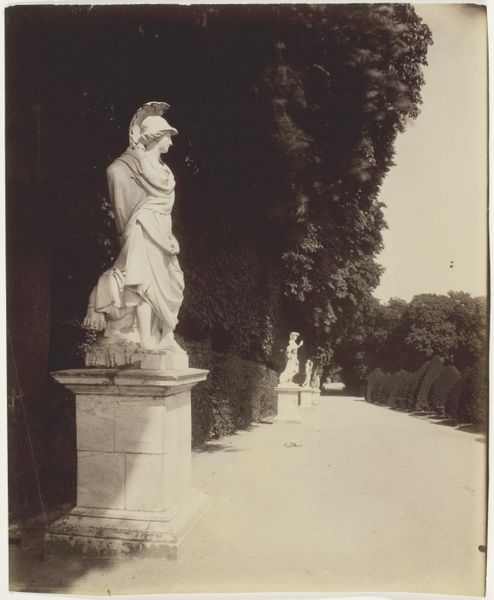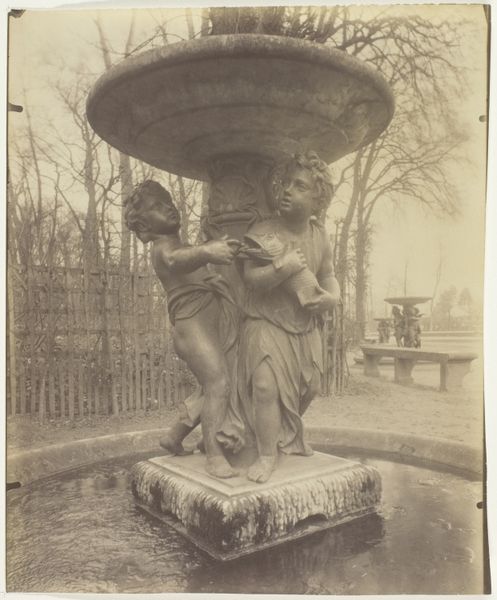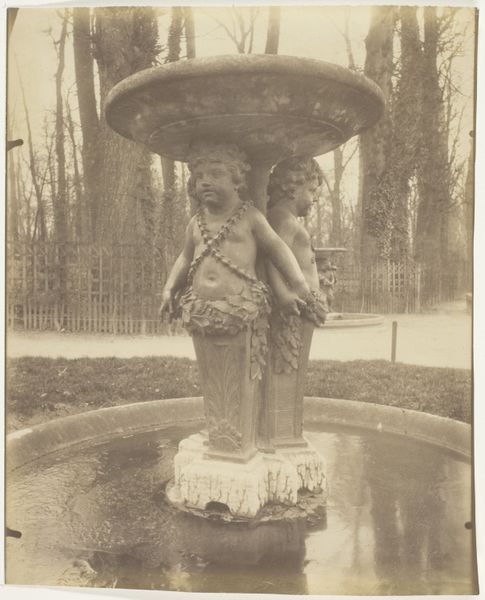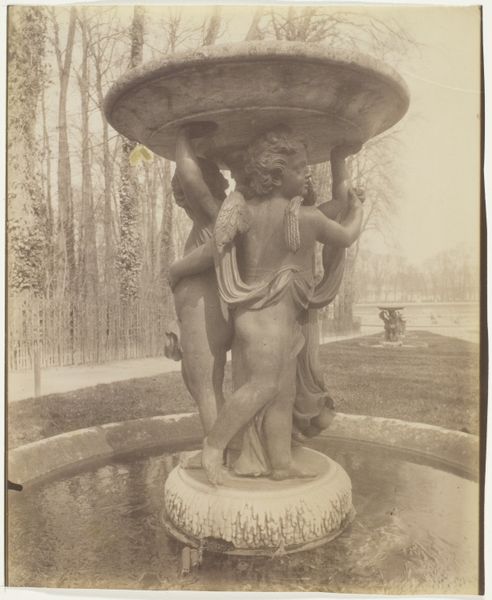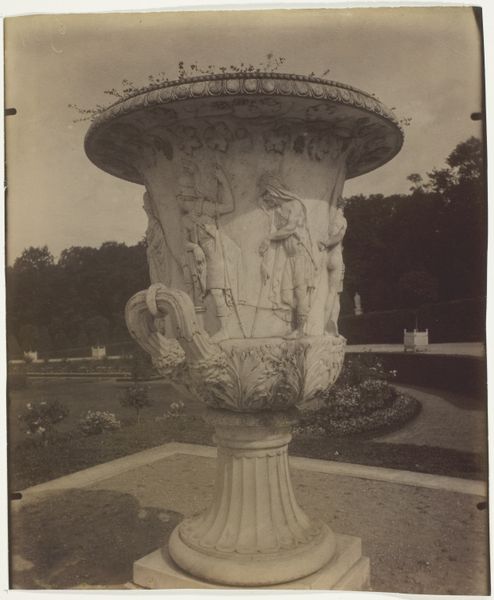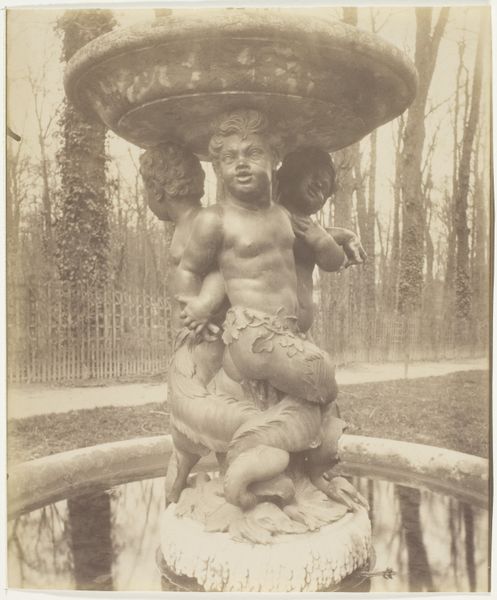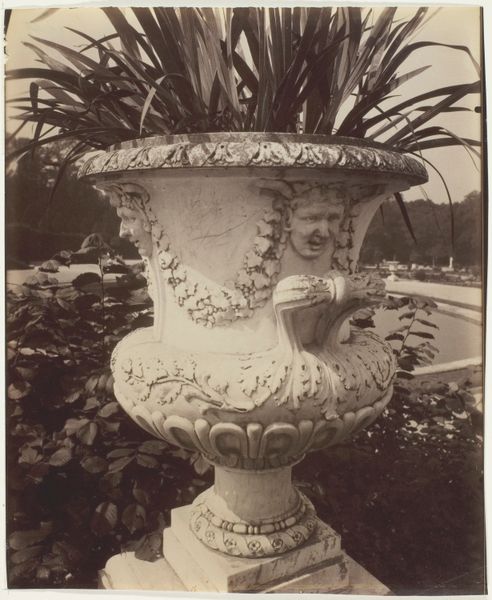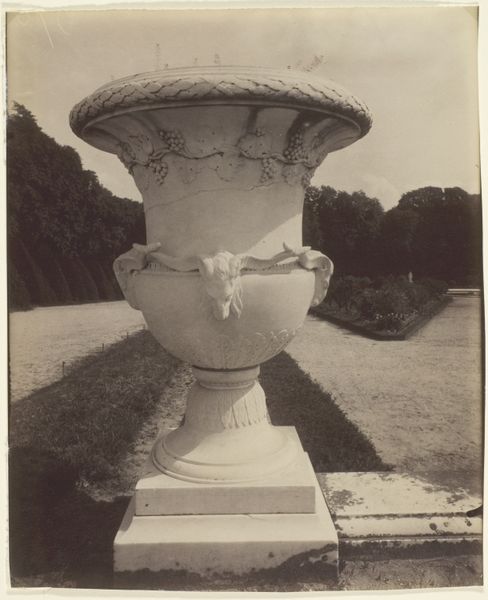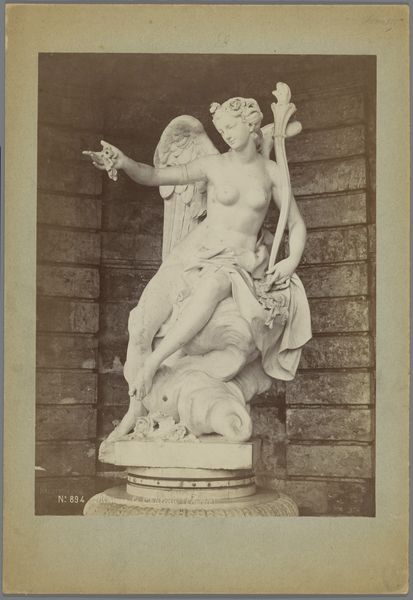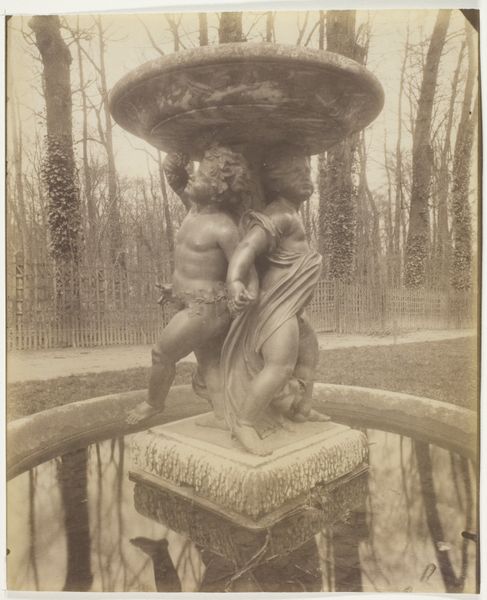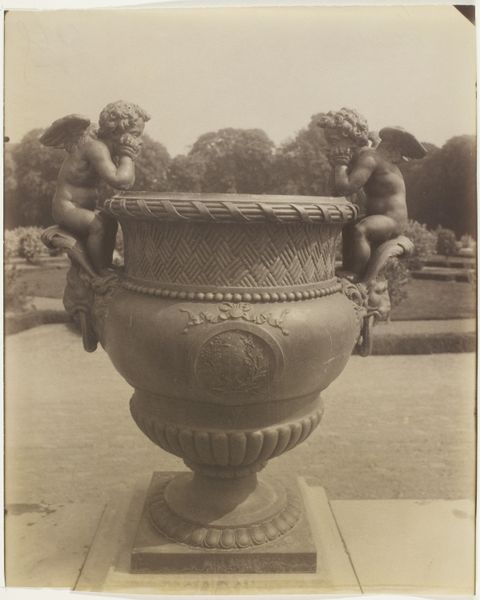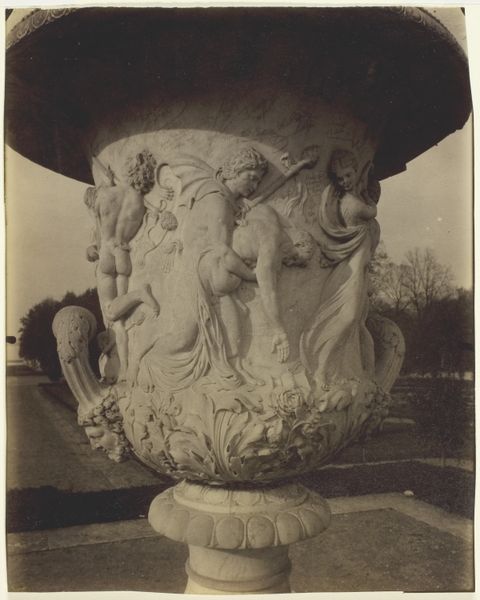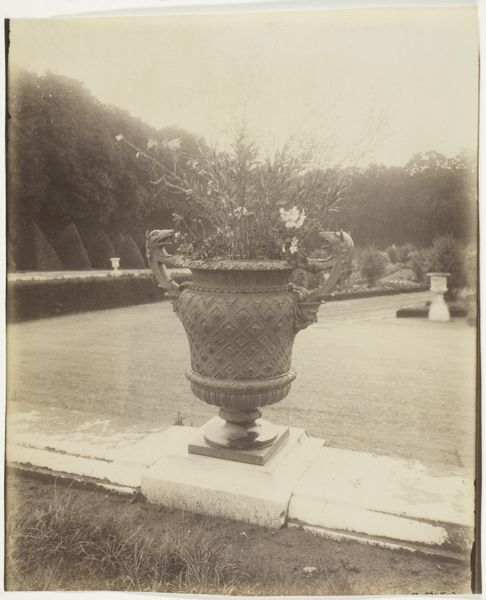
print, photography, sculpture
# print
#
landscape
#
photography
#
geometric
#
sculpture
#
academic-art
Dimensions: 21.5 × 17.7 cm (image); 21.5 × 17.9 cm (paper)
Copyright: Public Domain
Editor: This photograph by Eugène Atget, called "Versailles, Vase," was taken around 1905. It feels heavy, like a relic of another era. What stands out to you? Curator: The vase immediately strikes me with its overt symbolism. Think about it – we have this classical form, adorned with cherubic figures and clusters of grapes. What do those elements evoke for you? Editor: I suppose cherubs speak to innocence, even love, and grapes, given their connection to wine, suggest celebration or even indulgence. Curator: Exactly. And that combination is quite intentional. Remember Versailles itself – a symbol of royal power and extravagant pleasure. Atget, through his lens, is capturing not just a vase, but an echo of a bygone era and its values. The classical vase shape connects it to ancient notions of beauty. Editor: So the photograph itself acts as a visual record, linking the present—Atget's time—back to the French monarchy's opulence? Curator: Precisely. It's a tangible link, a cultural artifact frozen in time. Consider how the soft sepia tone adds to the sense of nostalgia. It's more than just a photo; it's a meditation on history and memory, using the vase as a key image to explore those grand ideas. Editor: I see now that Atget isn't just photographing a vase; he's capturing a complex web of historical and symbolic associations. I never thought a photograph could carry so much! Curator: Indeed! Photography, at its finest, allows us to explore the layers of meaning embedded within seemingly simple objects and landscapes. It transforms our everyday world into a canvas of memory.
Comments
No comments
Be the first to comment and join the conversation on the ultimate creative platform.
